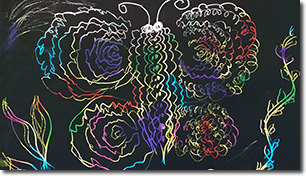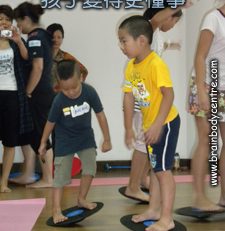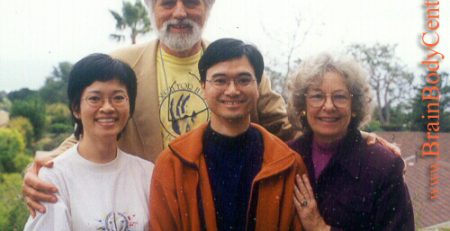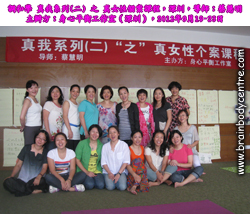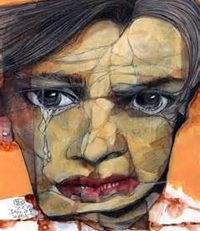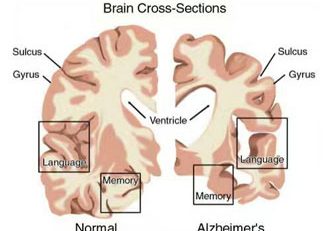No Seeing, No Drawing; Drawing When Seeing
Amy Choi (Hong Kong, China) May 27, 2014
One segment of the Double Doodle Play course is to let participants to explore a variation to Double Doodle movements called “Geometric Doodles¡¨. This entails one to hold a pen in each hand and put them respectively on two centres on the left and right sides of the paper. One then wiggles both hands to keep drawing outward from the two centres in clockwise and anti-clockwise directions to form flower shapes. Finally, one refines on these two shapes to make a Double Doodle drawing.
This technique requires the participant to know clearly where his/her body midline is, as well as the distance and spatial relationship between the body midline and the centres of the two circles. It also requires the participant to feel and see the trembling lines, understand the lines would gradually grow into larger shapes and know the sense of direction in drawing clockwise and anti-clockwise doodles etc.
This kind of doodle seems easy but every time when I teach this segment, I would notice that some participants have difficulties in doing it. Perhaps, they do not understand, going into a state of confusion, not knowing how to begin; or try too hard, thinking continuously; or use various “compensatory” approaches such as random drawing, drawing circles, drawing one-directional spirals or drawing with one hand etc., etc..
Last weekend, a 13-year-old boy came to the Double Doodle Play course in Hong Kong. According to his mother, he has learning challenges and has lost motivation in studying. He had come for a private session in the previous week. I noted that he in fact had the ability to be aware. He clearly knew his own interests and understood what needed to be improved in learning. His thinking was straight forward and simple but his body was tense, and not well-coordinated. I believed that he would benefit from the balancing skills of kinesiology. I also noticed that he was interested in drawing and thus I encouraged him to join the Double Doodle Play course. That would allow him to integrate when he had learned such skills and continued to practice drawing at home. Upon listening to my advice, he was eager to join the course and also asked his mother to join with him.
As expected, I had a deeper insight into his learning state when I saw him doing double doodles in class. It was most obvious when I saw his ” Geometric Doodle” drawing. The first one on butterfly was the demonstration I did. The second one on sketchy patterns was what he drew after watching the demonstration.
In observing the way he drew Double Doodles, I began to understand that he had trouble in doing things with paper and pen. I also reckoned that the corresponding movement skills in his body and brain were probably not ready when he had to perform such tasks as writing and copying. Talking about this drawing, it was not that he did not want to draw it well, only that his eyes and brain could not see the two centres of Geometric Doodles. He could not understand the connection between the two centres and his body, let alone see the trembling and continuously changing shapes. To help him master this skill, I stood close to him in doing a demonstration (visual), explained to him while doing (hearing), and held his hands to do it twice with him (proprioceptive). Eventually, he mastered it a bit better, changing from a completely confused state to beginning to master the skill gradually. I encouraged him to continue with this activity back home, to enhance the consciousness about the body midline and to develop the ability of midline operation.
From this example, I also understand that when one cannot see, one cannot draw; when one draws, it can be said that one probably sees. The main focus of this course is to develop one’s whole-brain vision through Double Doodle Play.

